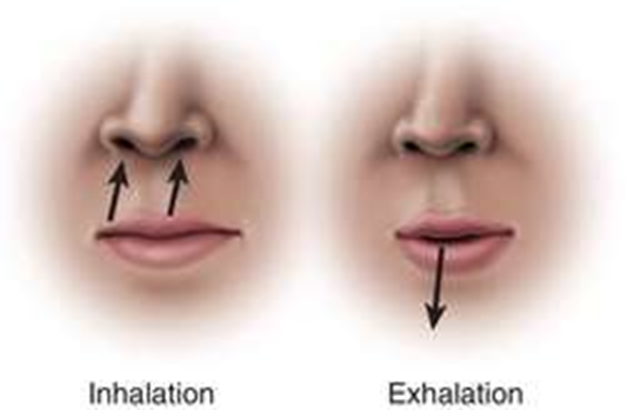A nurse is preparing a client with Crohn’s disease for a barium enema. What should the nurse do the day before the test?
Encourage dietary intake
Encourage plenty of fat
Serve dairy products
Order a high-fiber diet
The Correct Answer is D
Order a high-fiber diet
Choice A Reason:
Encourage dietary intake
Encouraging dietary intake is generally important for maintaining nutritional status, but it is not specific to the preparation for a barium enema. The preparation for a barium enema typically involves dietary restrictions to ensure the colon is clear for the procedure. Therefore, this choice is not correct.
Choice B Reason:
Encourage plenty of fat
Encouraging plenty of fat is not appropriate for the preparation of a barium enema. High-fat foods can slow down the digestive process and may interfere with the clarity of the images obtained during the procedure. Therefore, this choice is not correct.
Choice C Reason:
Serve dairy products
Serving dairy products is not recommended before a barium enema. Dairy products can cause gas and bloating, which can interfere with the procedure. Additionally, some patients may be lactose intolerant, which can further complicate the preparation. Therefore, this choice is not correct.
Choice D Reason:
Order a high-fiber diet
Ordering a high-fiber diet is the correct choice. A high-fiber diet helps to clear the intestines by promoting bowel movements. This is important for ensuring that the colon is empty and clear for the barium enema, which allows for better imaging and more accurate results.
Nursing Test Bank
Naxlex Comprehensive Predictor Exams
Related Questions
Correct Answer is B
Explanation
Choice A reason: Consuming a high-protein diet is not typically recommended for clients with hepatitis B. While protein is essential for overall health, excessive protein intake can put additional strain on the liver. Instead, a balanced diet with adequate carbohydrates, fruits, and vegetables is advised to support liver function.
Choice B reason: Resting frequently throughout the day is crucial for clients with hepatitis B. The liver is responsible for many vital functions, including detoxification, protein synthesis, and the production of biochemicals necessary for digestion. When the liver is inflamed or damaged, as in hepatitis B, it needs ample rest to recover and function properly.
Choice C reason: Clients with hepatitis B should not donate blood. Hepatitis B is a bloodborne virus, and donating blood can transmit the infection to others. Blood donation guidelines strictly prohibit individuals with hepatitis B from donating blood, regardless of the time elapsed since completing medication.
Choice D reason: Taking acetaminophen every 4 hours for discomfort is not advisable for clients with hepatitis B. Acetaminophen is metabolized by the liver, and excessive use can lead to liver damage. Clients with liver conditions should use acetaminophen sparingly and under medical supervision to avoid exacerbating liver damage.
Correct Answer is ["B","C","E"]
Explanation
Choice A: Lean on your back with your knees bent.
Reason: This instruction is incorrect. Pursed lip breathing is typically performed in a seated position with the neck and shoulders relaxed. Lying on your back with knees bent is not a recommended position for this breathing technique.
Choice B: Use your abdominal muscles to squeeze air out of your lungs.
Reason: This instruction is correct. Using the abdominal muscles helps to expel air more effectively from the lungs, which is a key component of pursed lip breathing. This technique helps to improve ventilation and reduce the work of breathing.

Choice C: Breathe out slowly without puffing your cheeks.
Reason: This instruction is correct. Breathing out slowly through pursed lips without puffing the cheeks helps to keep the airways open longer, allowing more air to be expelled from the lungs. This technique is particularly beneficial for individuals with chronic obstructive pulmonary disease (COPD) or other respiratory conditions.
Choice D: Focus on inhaling and holding your breath as long as you can.
Reason: This instruction is incorrect. The focus of pursed lip breathing is on controlled exhalation rather than holding the breath. Inhaling should be done slowly through the nose, and exhaling should be prolonged through pursed lips.
Choice E: Exhale at least twice the amount of time it took to breathe in.
Reason: This instruction is correct. The exhalation phase should be longer than the inhalation phase, typically taking at least twice as long. This helps to improve the efficiency of breathing and reduce shortness of breath.
Choice F: Open your mouth and breathe deeply.
Reason: This instruction is incorrect. Pursed lip breathing involves breathing in through the nose and exhaling through pursed lips. Opening the mouth and breathing deeply is not part of this technique.
Whether you are a student looking to ace your exams or a practicing nurse seeking to enhance your expertise , our nursing education contents will empower you with the confidence and competence to make a difference in the lives of patients and become a respected leader in the healthcare field.
Visit Naxlex, invest in your future and unlock endless possibilities with our unparalleled nursing education contents today
Report Wrong Answer on the Current Question
Do you disagree with the answer? If yes, what is your expected answer? Explain.
Kindly be descriptive with the issue you are facing.
